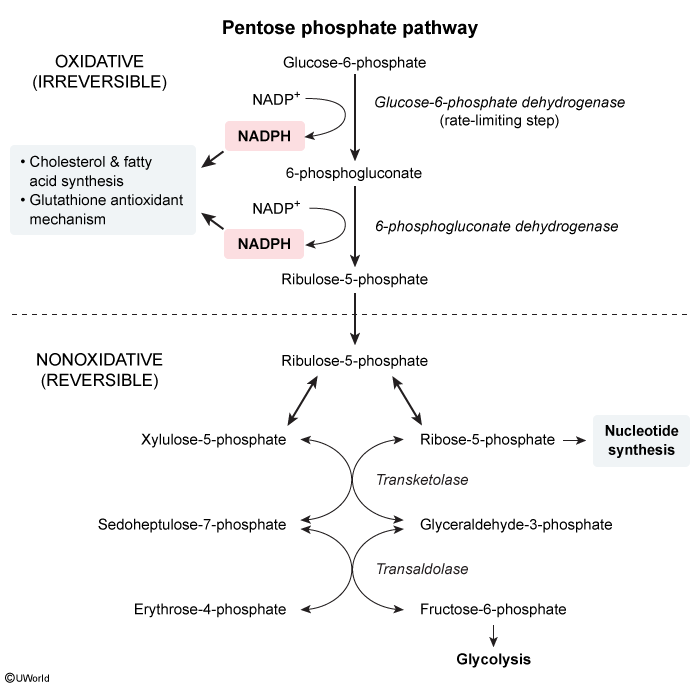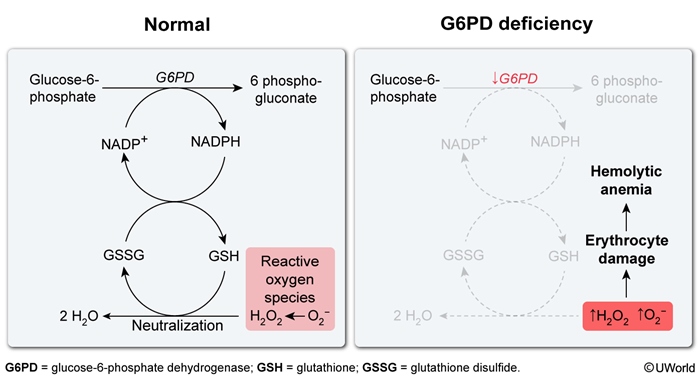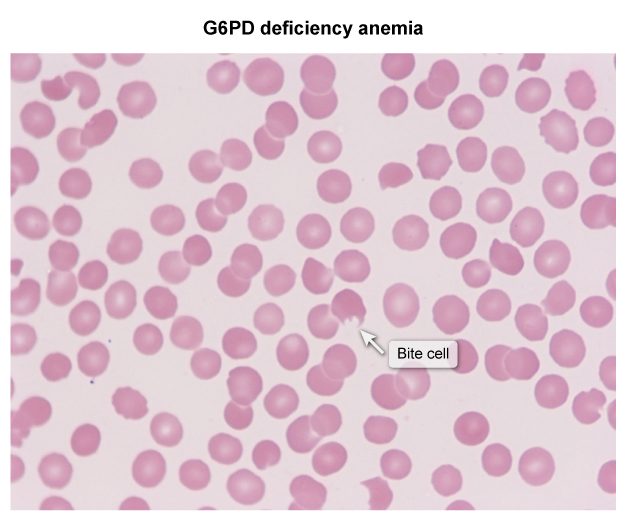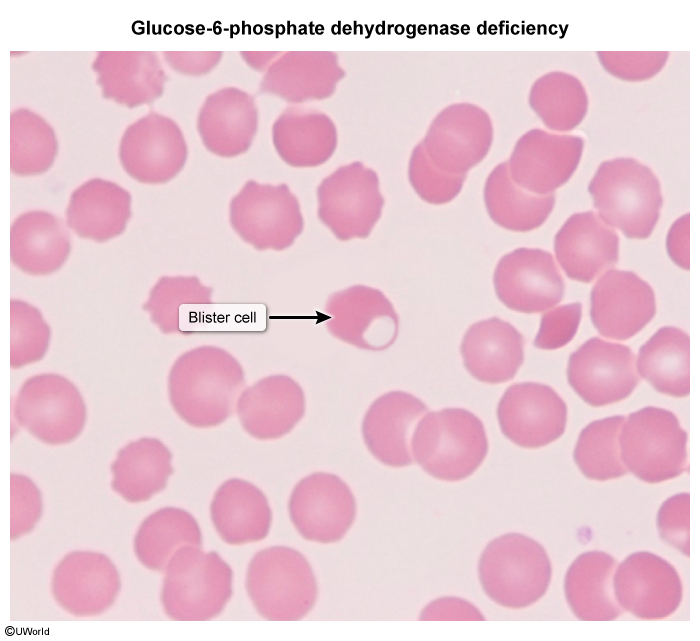Glucose-6-Phosphate Dehydrogenase Deficiency
Article Sections
Introduction
Glucose-6-phosphate dehydrogenase (G6PD) deficiency is an X-linked disorder affecting red blood cells (RBCs). G6PD catalyzes the rate-limiting step in the pentose phosphate pathway, which produces NADPH in the cytosol of RBCs, protecting them from oxidative damage (Figure 1). Without G6PD, cells are prone to episodes of acute hemolysis under oxidative stress.
Pathophysiology
The pentose phosphate pathway, also known as the hexose monophosphate shunt, plays an important role in protecting cells from oxidative damage. This pathway generates NADPH, which cells use to maintain a steady supply of reduced glutathione, an antioxidant that can neutralize free radicals (eg, superoxide anion, hydrogen peroxide) (Figure 2). Without NADPH, glutathione remains in an oxidized state and cannot detoxify free radicals. Mature RBCs, which lack nuclei and organelles, are particularly dependent on the pentose phosphate pathway because it is the only mechanism for them to generate NADPH.
Continue Learning with UWorld
Get the full Glucose-6-Phosphate Dehydrogenase Deficiency article plus rich visuals, real-world cases, and in-depth insights from medical experts, all available through the UWorld Medical Library.
Figures



Images

